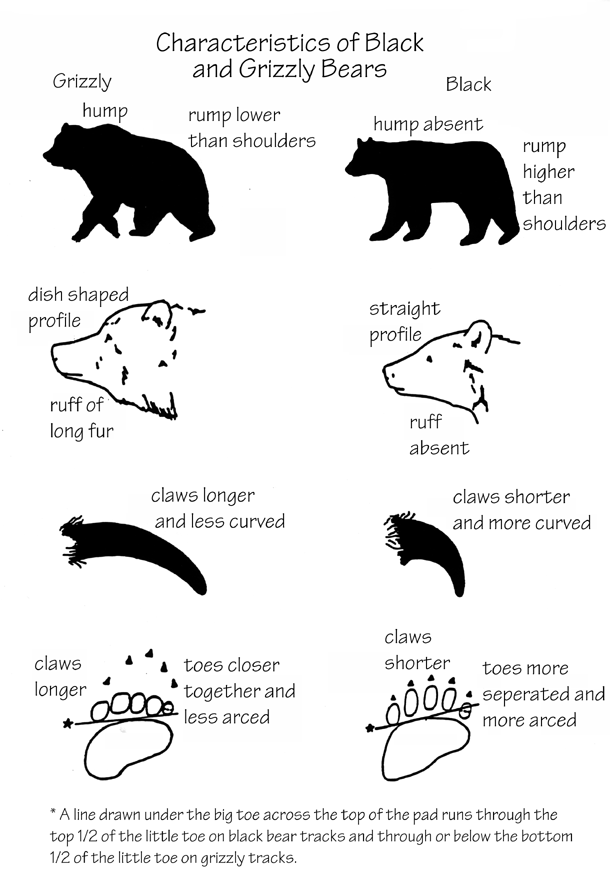Last updated: October 23, 2017
Article
Characteristics of Bears in Yellowstone

NPS


Left image
Grizzly bear characteristics
Credit: NPS
Right image
Black black characteristics
Credit: NPS
Physical and Behavioral Characteristics
Yellowstone is home to two species of bears: grizzly bears and black bears. Of the two species, black bears have a much larger range across the United States. Today, the grizzly bear remains in a few isolated locations in the lower 48 states, including Yellowstone
The grizzly bear is typically larger than the black bear and has a large muscle mass above its shoulders; a concave, rather than straight or convex, facial profile; and its behavior is much more aggressive. lack bears are primarily adapted to use forested areas and their edges and clearings. Although grizzly bears make substantial use of forested areas, they also make much more use of large, non-forested meadows and valleys than do black bears. Black bears have short, curved claws better suited to climbing trees than digging. This enables black bears to forage for certain foods, such as mast, by climbing trees. In contrast, grizzly bears have longer, less curved claws and a larger shoulder muscle mass better suited to digging than climbing. This enables grizzly bears to efficiently forage for foods which must be dug from the soil such as roots, bulbs, corms, and tubers, as well as rodents and their caches.
Behaviorally, black bears are generally much less aggressive than grizzly bears and rely on their ability to climb trees to allow themselves and their cubs to escape predators such as wolves, grizzly bears, or other black bears. Grizzly bears are more likely to rely on their size and aggressiveness to protect themselves and their cubs from predators or other perceived threats. Due to the behavioral differences between black bears and grizzly bears, most bear-inflicted human injuries inside Yellowstone are caused by grizzly bears, usually during unintentional surprise encounters between hikers and grizzly bear females with cubs in backcountry areas. When backcountry hiking, you can reduce the odds of being injured by a bear by:
- hiking in groups of 3 or more people
- staying alert
- making noise in areas with poor visibility
- carrying bear spray
- not running during encounters with bears
During a surprise encounter, slowly back away. If the bear charges, stand your ground and use your bear spray. If the bear attacks during a surprise encounter, play dead. If a curious or predatory bear persistently stalks you with its ears erect, be aggressive and fight back. Fight back during any attack at night while you are sleeping.
